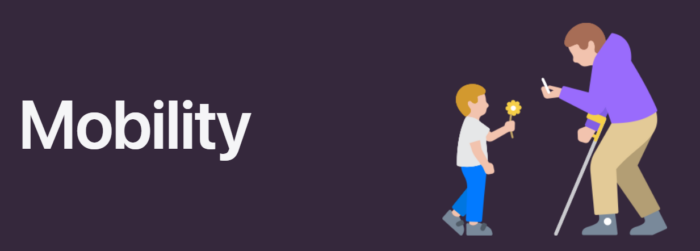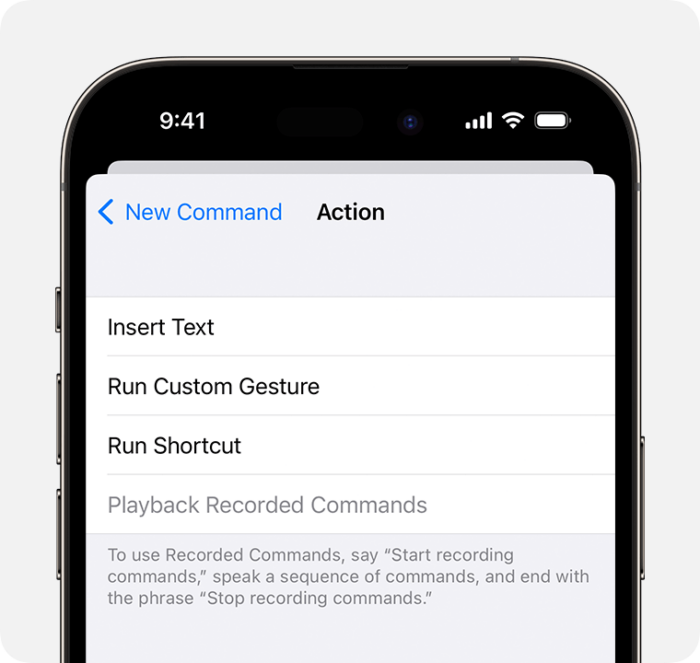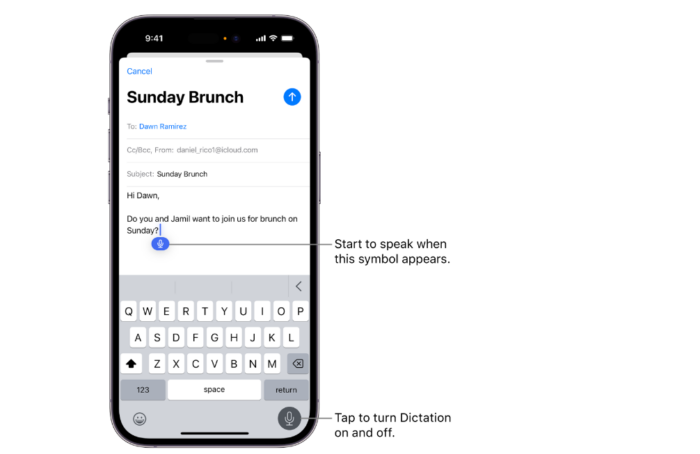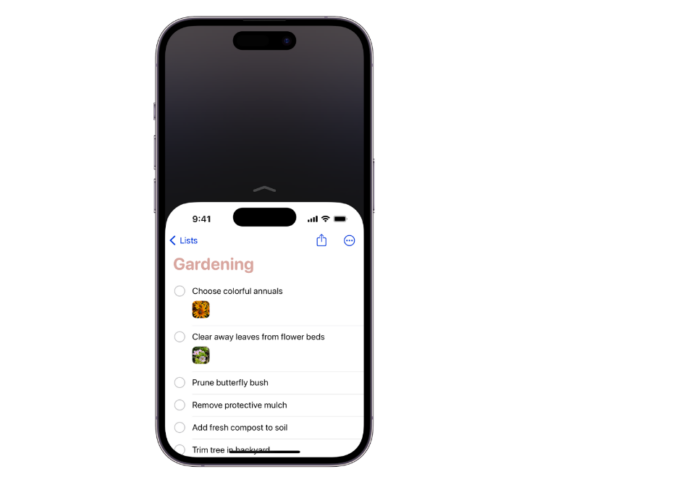
In this world of increased communication, mobile phones have evolved from convenience items into vital tools. But with all of the hand movement involved in using them, they can seem inaccessible to people with limited mobility. iOS 17’s accessibility features are opening them up to a wider variety of users.
When it comes to hands-free control of mobile devices, iOS 17 offers Voice Control and Siri. While Siri is more comprehensive in the ways it can assist, Voice Control now allows users to create new commands.

The Dictation and Predictive Text features are also helpful tools for people with limited mobility, as they require little to no hand movement.

Through Switch Control, users can operate their iPhone via an external AT device — such as an adaptive button or joystick — or use a built-in feature like the camera to control their phone via head movements and head-tracking technology. Users just need to move their head to the left or right while in view of the front-facing iPhone camera and set up those movements as two different switches with separate actions. In addition to head movements, they can also interact with the iPhone through certain facial expressions, activating its functions by smiling or raising an eyebrow.
To perform actions or gestures that may be difficult for them, users can activate AssistiveTouch. Through a voice command, simple tap or the equivalent on a compatible adaptive accessory (such as a joystick), AssistiveTouch can scroll, adjust volume, take a screenshot, use Apple Pay, etc. — the kind of functions that usually require a lot of multi-finger movement.
Another feature geared toward users with limited mobility is Reachability. When they use their iPhone with one hand in Portrait orientation, they can use Reachability to lower the top half of the screen so it’s within easier reach of their thumb.

For users with hand tremors and limited dexterity/fine motor control, iOS 17’s level of accessibility allows for adjustment of how the iPhone touchscreen responds to tap, swipe and touch-and-hold gestures. Through these new touch accommodations, the iPhone can now recognize faster or slower touches and ignore multiple touches. Users can also prevent their iPhone from waking when they touch the screen, or turn off Shake to Undo if they unintentionally shake the phone.
For information about accessibility features supporting hearing, stay tuned for the next iOS 17-related blog update.
